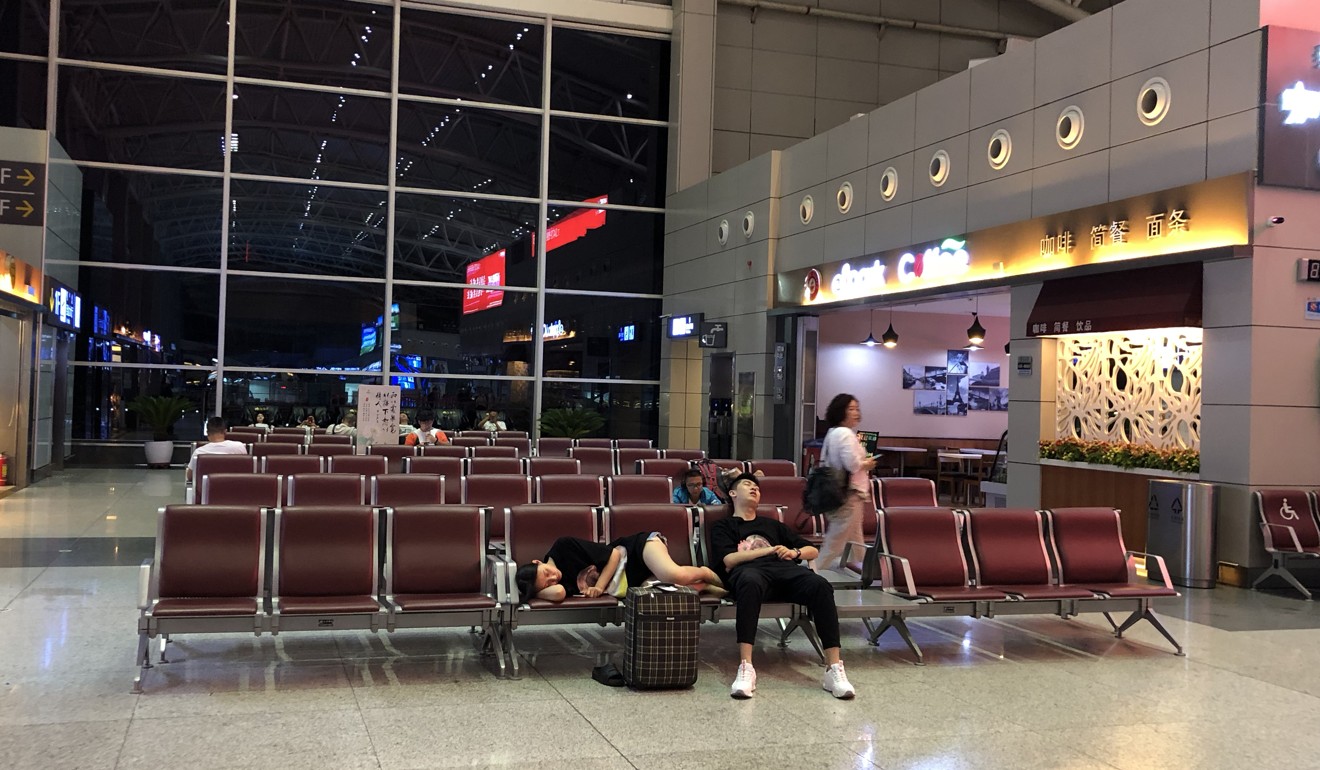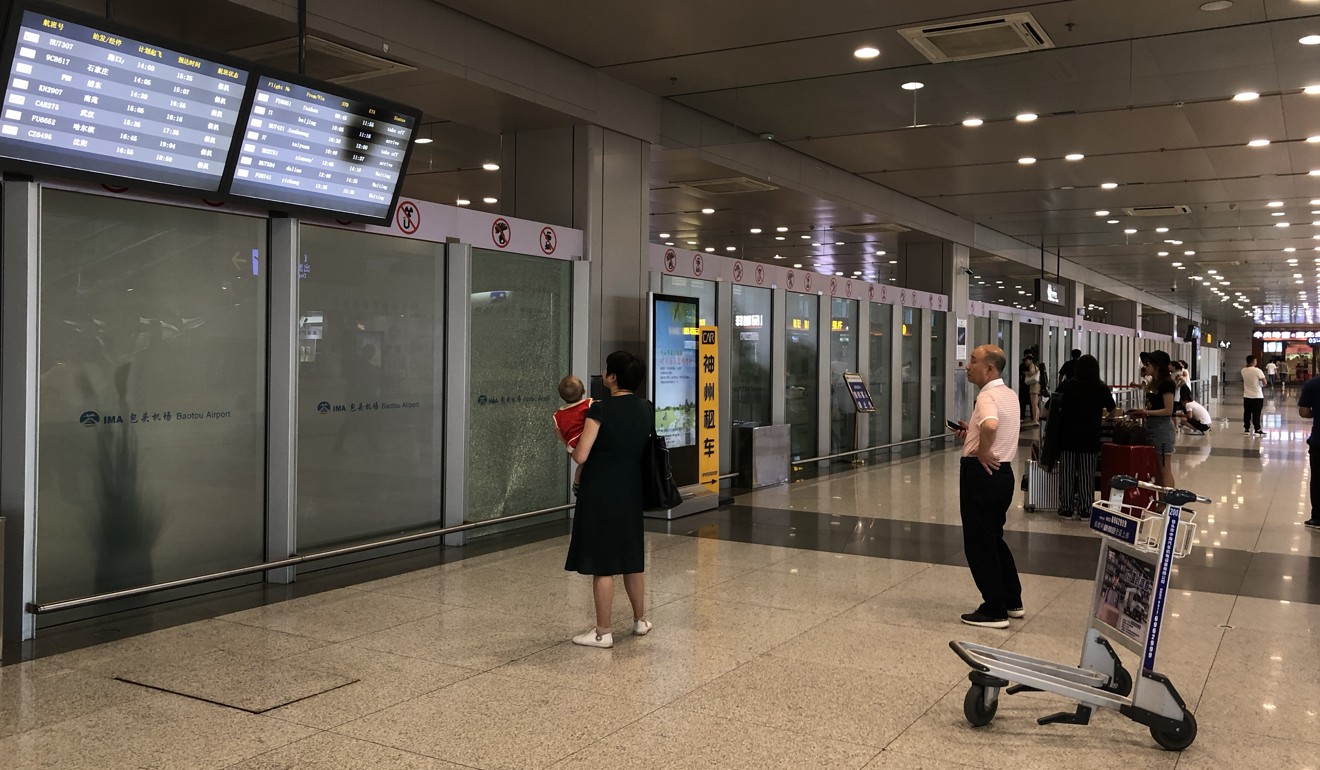
With China’s economy set to slow, what hope is there for struggling cities?
- Overspending on infrastructure in places like Baotao underscores limits of Beijing’s traditional stimulus policies
- Rising debt levels and falling revenue leave local governments with few options to offset slower growth
Baotou Donghe Airport was eerily quiet on an early July evening. In the departure hall staff outnumbered passengers and there were no queues at the security checkpoints, even though the information boards showed there were at least three flights due to take-off that evening.
All of the shops and convenience stores were open but there were few customers. Of the 10 boarding gates at the terminal, only one was in use.
“Welcome to Baotou, where you never have to wait in line at an airport security check,” a passenger said.
The terminal, in the most populous city in northern China’s Inner Mongolia autonomous region, opened at the end of 2014 and has the capacity to handle 4 million passengers a year.

Actual passenger numbers peaked at just under 2.1 million in 2017. The following year they fell to just over 2 million as the local economy slowed.
Like many places across China, Baotou knows that unlike in years gone by it can no longer rely on the central government to plough funds into its economy in the form of infrastructure spending.
When the world was rocked by the financial crisis in 2008, and China’s economic growth slowed to 6.1 per cent in the first quarter of 2009, Beijing rolled out a 4 trillion yuan stimulus programme. Much of the money was spent on local government infrastructure projects.

Since the start of the trade war last year, Beijing has used targeted stimuli – including personal and business tax cuts, and reductions in bank lending costs – to stabilise the economy, but the results have been mixed.
The current state of the economy will be revealed on Monday when the National Bureau of Statistics releases gross domestic product growth data for the second quarter and first half of 2019. Economists polled by Reuters estimate 6.2 growth for the April-June period, following 6.4 per cent actual growth in each of the previous two quarters.
Lu Ting, chief China economist at Nomura, said he thought China’s full-year growth would slow to 6.1 per cent this year.
Meanwhile, China’s Vice-Premier Liu He, the country’s lead negotiator in the ongoing trade talks with the US, said on Thursday that the economic indicators for second-quarter growth, employment and inflation were all “normal” and in line with the government’s expectations.
Liu Shangxi, head of the Chinese Academy of Fiscal Sciences, a think tank that advises the finance ministry, said in Hong Kong last week that China was not about to embark on a new spending spree to shore up the economy.
“We will not introduce another giant economic stimulus programme … as the situation is different from 2008,” he said.

Baotou is one of countless Chinese cities that have overdeveloped their urban landscapes with projects financed by debt. In the downtown area, for instance, there are scores of residential developments built around a massive green space, but many of them are built on borrowed money.
China’s National Audit Office found that the municipal government illegally provided credit guarantees to four local financing vehicles in the first nine months of 2016, which left it more than 5.2 billion yuan in debt.
With national growth set to continue to slow this year – possibly to near the bottom end of the government’s forecast range of 6 to 6.5 per cent – some analysts say Beijing will have to intervene.
Larry Hu, chief China economist at Macquarie Capital, said that while the US policy easing would be in the form of an interest rate cut by the Federal Reserve, China’s stimulus would take the form of “stimulating infrastructure and property”.
Bo Zhuang, chief China economist at TS Lombard, said China’s domestic growth drivers, including investment and consumption, were weak and that Beijing was likely to use “quasi fiscal and monetary easing” to accelerate growth later this year.
But to the people of Baotou, the idea of building more infrastructure seems strange.
“What’s the point of having a subway when all the buses are empty,” one resident said.

